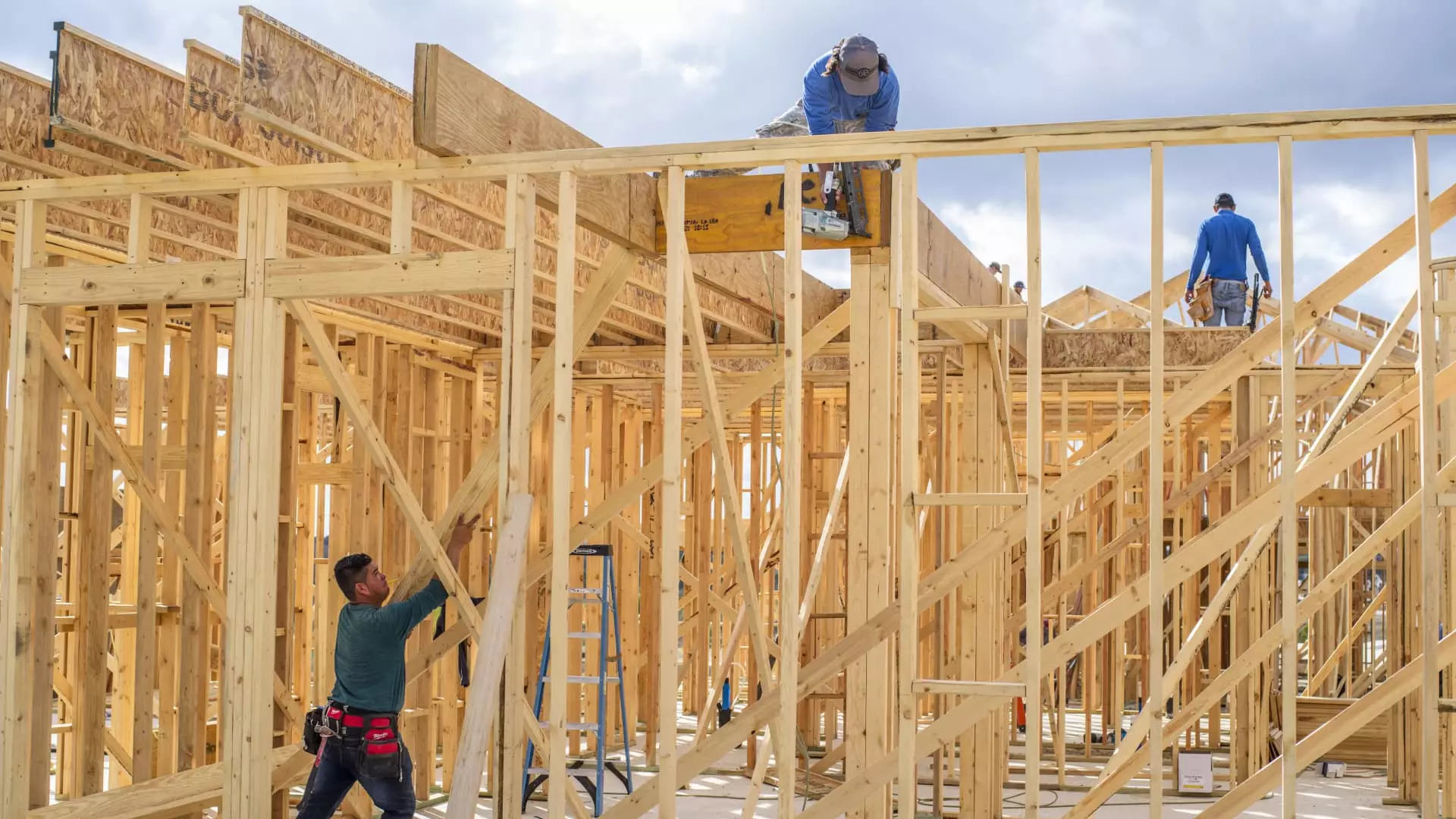In February, the sentiment among single-family homebuilders took a significant downturn, marking its lowest point in five months. This decline highlights growing apprehensions regarding tariffs and their potential impact on construction costs. According to the National Association of Home Builders’ (NAHB) Housing Market Index (HMI), sentiment plummeted by 5 points to a reading of 42, firmly placing it below the neutral threshold of 50. This decline paints a stark picture of the industry’s mood compared to the previous year, when the index stood at 48, indicating that builders are increasingly wary about the future.
Carl Harris, the chairman of NAHB and a homebuilder from Wichita, Kansas, encapsulated this sentiment well, stating, “While builders hold out hope for pro-development policies, particularly for regulatory reform, policy uncertainty and cost factors created a reset for 2025 expectations.” This statement reflects an industry grappling with not just immediate hurdles but also long-term challenges that could affect growth and sustainability.
Breaking down the HMI reveals concerning trends in its components. Current sales conditions saw a decline of 4 points, landing at 46, while buyer traffic dropped even more dramatically by 3 points to just 29. Perhaps most alarming was the 13-point fall in sales expectations over the next six months, now sitting at 46, the lowest it has been since December 2023. These statistics suggest a significant shift in the market dynamics and an unsettling outlook for the upcoming months.
The ongoing challenges of high mortgage rates exacerbate these issues. With the average 30-year fixed mortgage rate exceeding 7% in January and February, potential buyers are likely feeling increased pressure on their financial situations. Additionally, home prices have witnessed upward trends compared to the previous year, further straining affordability for many families looking to purchase homes.
Compounding the struggles homebuilders face is the impending threat of tariffs on essential materials. Even with delays in implementing tariffs on goods from Canada and Mexico, many builders remain on high alert. Data suggests that a significant portion of key construction materials is sourced internationally; 32% of appliances and 30% of softwood lumber used in homebuilding come from trade with foreign suppliers. According to Robert Dietz, NAHB’s chief economist, this reliance on imports creates ongoing uncertainty regarding costs. Builders are left wrestling with how to adjust their budgets and operations in anticipation of these financial pressures.
The shifting landscape of builder sentiment comes at a crucial time, particularly with the spring market approaching—typically a robust season for home sales. Unfortunately, indications suggest that fewer homes may be added to the market, potentially stifling recovery efforts. The combination of high prices and elevated mortgage rates reduces the pool of prospective buyers, and many builders have reported a noticeable decline in demand.
Interestingly, responses to these challenging conditions include a shift in pricing strategies, with a decrease in the percentage of builders willing to lower prices—down to 26% in February from 30% in January, and the lowest since May 2024. This decrease signals that builders may be attempting to maintain price integrity in a weak demand environment, which could have long-term implications for market dynamics.
Moreover, sales incentives that typically entice buyers are also declining, suggesting that they have become less effective. In an environment where affordability challenges are at the forefront, incentives that would have previously swayed buyers may now fall on deaf ears. Ryan Marshall, CEO of PulteGroup, encapsulated this feeling when he noted that despite the Federal Reserve’s attempts to reduce short-term rates, mortgage rates remained prohibitively high. As a result, buyers are further removed from entering the market, creating a cyclical challenge for builders.
The prevailing trends in the single-family home market underscore a complex and evolving landscape for builders. Diminished sentiment, influenced by tariff uncertainties, high mortgage rates, and escalating construction costs, poses substantial challenges. As builders navigate these tumultuous waters, there emerges a pressing need for strategic adaptation and policy reform to revitalize the market and meet the housing demands of the future. The ramifications of these changes will undoubtedly impact not just builders but the broader economy as well, emphasizing the urgent need for innovative solutions to ensure market stability.

